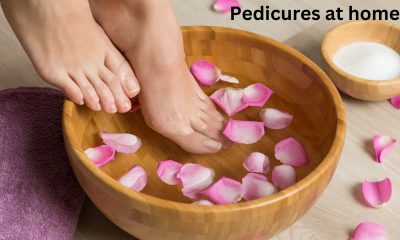Home
Spider Plant: A Hardy, Air-Purifying Wonder

Originating in tropical and southern Africa, the spider plant is a decorative indoor plant. It is a popular indoor plant that is simple to grow and has both therapeutic and air-purifying qualities. Its long, thin, arching leaves are either variegated with white or uniform green. The spider plant gets its name from the way its leaves dangle down from the mother plant, resembling spiders on a web.
Name in science: Chlorophytum Comosum Common names include Hen & Chicken, Spider ivy, Ribbon plant, St. Bernard’s lily, and airplane plant. Interesting Advantages of Spider Plants: To learn more about the many advantages of this low-maintenance houseplant, continue reading.
It’s Nearly Hard to Kill: The spider plant is one of those houseplants that can essentially grow itself. It can quickly adapt to many climates and survive even if it is overwatered, underwatered, or neglected for days. Although it is advised to keep the spider plant in an area with brilliant indirect sunlight, it may thrive in both low light and partial sunshine.
Cleanse the Air: One of the simplest plants to cultivate for air purification is the spider plant. It works well to eliminate dangerous airborne pollutants like formaldehyde, xylene, toluene, and carbon monoxide. The spider plant is one of the top three houseplant species that effectively remove formaldehyde, a common household toxin that is typically present in produced wood products, plastic products, insecticides, leather goods, adhesives, clothing, curtains, and other items, according to NASA studies.
Pet-safe: The spider plant is classified as non-toxic for pets by the American Society for the Prevention of Cruelty to Animals (ASPCA). However, it is still recommended that pets be kept away from this plant and that they not consume the leaves because that could be dangerous. Chemical substances found in spider plants are thought to be related to opium and may cause vomiting, diarrhea, or upset stomach in pets.
Expedites patients’ recuperation: Several studies have shown that surgical patients who are placed in hospital rooms with spider plants recover more quickly than those who are placed in rooms without the plant. The patients are discharged from the hospital earlier, need less pain medication, have no problems with their heart rate or blood pressure, and are less depressed or anxious.
Boosts Humidity: The spider plant transpires a lot and is a perennial. It circulates the moisture via its stems and leaves after absorbing it through its roots. The water evaporates into the atmosphere after it reaches the leaves, raising the humidity. The danger of a number of airborne illnesses, including colds, coughs, sore throats, and flu-like symptoms, is reduced by the higher humidity. In addition to preventing these illnesses, growing spider plants at home or at work improves focus and productivity. In addition to its many wonderful advantages, the spider plant is an extremely attractive houseplant. To bring some greenery into the house, you can plant it in a hanging basket or any regular container.
Moreover, The plant is made even more beautiful and appealing by the spiderettes that hang down the pot after outgrowing the mother plant.

-

 Science & Environment1 week ago
Science & Environment1 week agoRESONANCE 1.0: Igniting Scientific Curiosity in Joypurhat
-

 Uncategorized5 months ago
Uncategorized5 months agoMindfulness
-

 Health & Lifestyle2 weeks ago
Health & Lifestyle2 weeks agoBangladesh Drops in Happiness Index 2025, Finland Tops Again
-

 Uncategorized7 months ago
Uncategorized7 months ago6 simple methods for doing pedicures at home.
-

 Health & Lifestyle3 weeks ago
Health & Lifestyle3 weeks agoTea After Iftar: Refreshing Tradition or Hidden Risk?
-

 Uncategorized8 months ago
Uncategorized8 months agoHow to be confident presentation in 10 ways
-

 Uncategorized8 months ago
Uncategorized8 months agoHow can you keep your relationship flawless and strong?
-

 Uncategorized8 months ago
Uncategorized8 months agoWhat colours of clothes should I wear according to our skin tone?
















